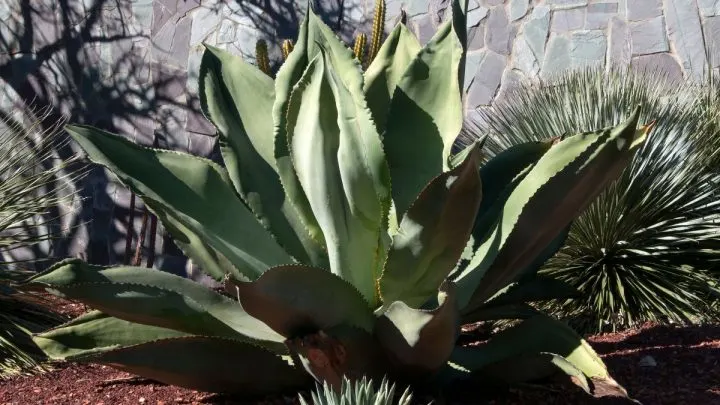Hello, dear ladies! In today’s article, we’re going to talk about large succulent plants, about the 9 best succulents for your home.
These plants aren’t the most beautiful plants you can choose for your home, but they are drought tolerant, not very needy and even a beginner can take care of them.
If you have such conditions in your home and you’re one of those people who don’t like taking care of your plants way too much, this article and these plants are right for you.
Let’s get that coffee ready and let’s start.
What Is A Succulent Plant?
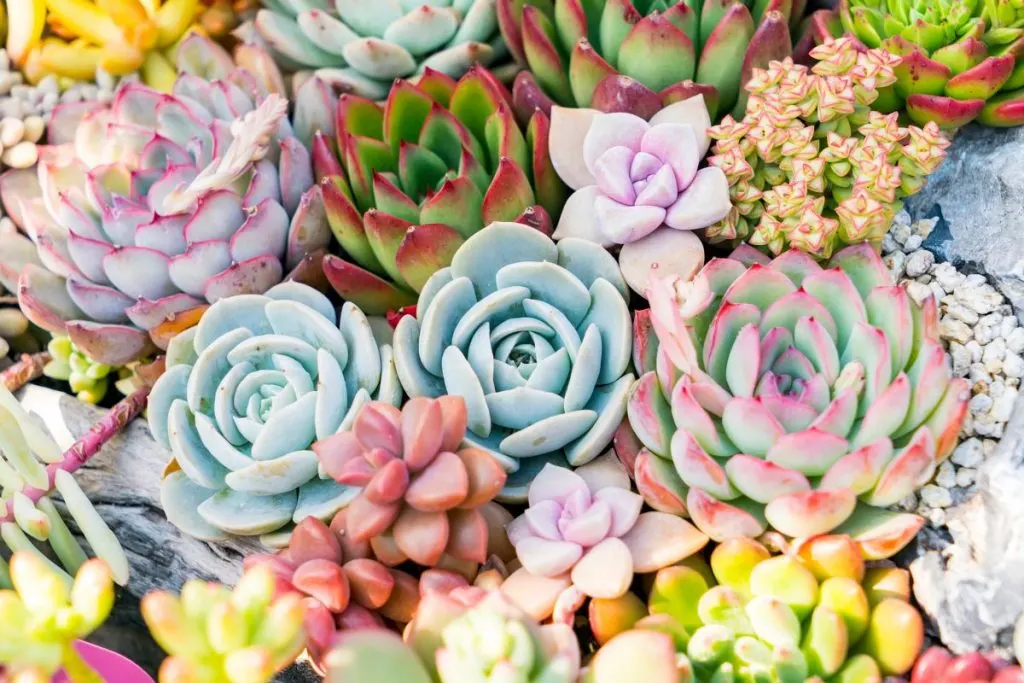
In botany, succulents, are thick, fleshy, and stuffed plants to retain water in dry climates and soil conditions. This is because in many cases it can only be used as an accurate property at the individual species level.
The word succulent is derived from the Latin word succus and means juice. Succulents can store water in various structures such as leaves and stems. The water content of some large succulent plants can have a very high percentage.
Succulents are often cultivated as ornamental plants because of their striking and unusual appearance and their ability to thrive with relatively minimal care.
Prickly Pear Cactus – All About These Potted Succulents
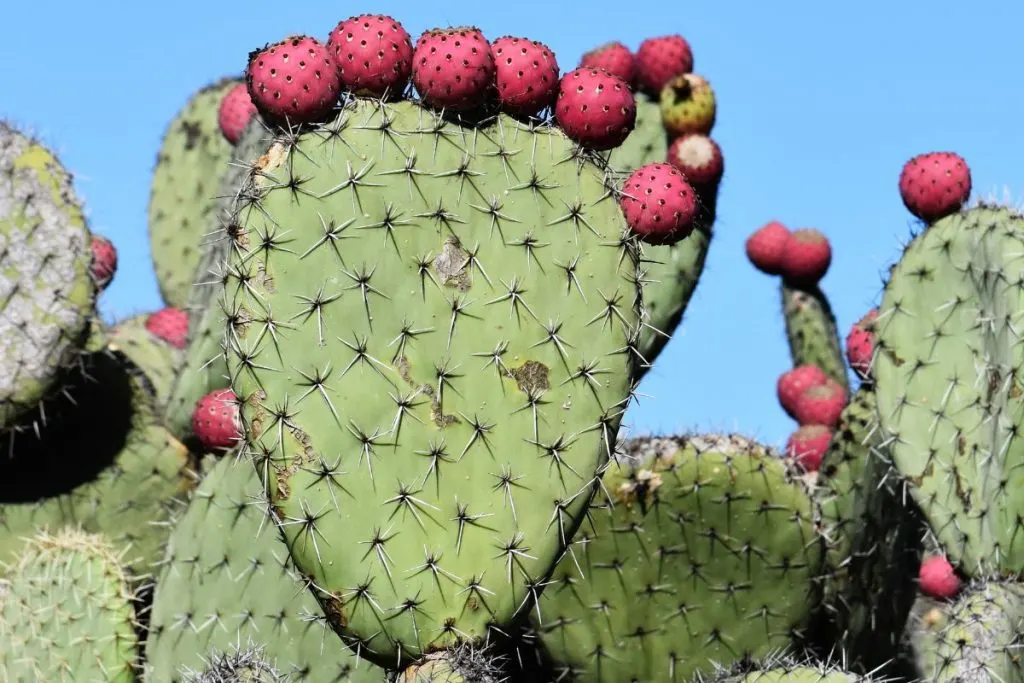
Prickly Pear (Prickly Pear) is one of the most prevalent cacti genera in the United States. Over 100 species of this plant are famous for their pointed, flat, club-shaped leaves. Many varieties have large, round spines, while others have small hair-like spines that come off on contact.
Light Conditions
As a desert cactus, prickly pear cactus thrives in full sun. This means at least 6 hours of direct sunlight per day. Indoors, west-facing or south-facing windows are best. In very hot climates, you can prevent burns by creating a shade at noon.
Soil Type
The most important requirement for all plants of the genus Prickly Pear is well-drained soil. Prickly pear is easy to grow in sandy or gravel soils, but it drains well and can withstand other types of soil as long as it is not too watery.
Watering Schedule
Prickly pear cacti appear to be dry and require little watering to maintain the plant. Therefore, cacti are often used in low-water gardens.
Temperature And Humidity
Prickly pear cacti breed in the hot and dry desert summers. It generally works well in areas with mild winters and hot, low-humidity summers. Prickly pear can be difficult in areas with very high humidity, even if the temperature of the plant is good.
Fertilizer
Prickly pear cactus rarely needs fertilizer when planted on the ground unless the soil is very poor. Containers run out of soil nutrients faster and require some fertilizer.
About Snake Plant – Large Succulent Plants

The tree has stiff, sword-shaped leaves and can grow from 6 inches to 8 feet tall. Snake plants can vary in color although many have green leaves and often have a yellow border.
Light Conditions
Snakes prefer indirect light but remain constant with some direct sunlight. They can adapt to full sun conditions and will also survive in low light.
Soil Type
Floor Snake plants prefer loose, well-drained soil. This plant will grow well in sandy soil. Use a potting soil low in peat. Peat works well in many cases, but it can become solid and sometimes have problems with rehydration or drainage. All-purpose cactus soil is a good choice.
Watering Schedule
Let the soil dry out between waterings. During winter, reduce watering to once a month or whenever the soil feels dry to the touch. The sin of over-watering; Too much water can harm the plant.
Temperature And Humidity
Snake plants like warm conditions and will suffer if exposed to temperatures below 50 degrees F. Place the plant in a draft-free location. Temperatures between 70 and 90 degrees Fahrenheit are best. Frost will kill this plant.
Fertilizer
Feed the plant with a mild cactus fertilizer during the growing season or a balanced slow-release 10-10-10 liquid fertilizer or a half-diluted 20-20-20 fertilizer. Do not fertilize in winter.
What To Know Of Jade Plant – Large Succulent Plants

Originating from South Africa, the jade tree was once believed to bring good luck to its owner, so it was often given as a housewarming gift. Because they are usually grown indoors only, they can be brought home or started growing at any time, from a professional nursery or by propagation.
Light Conditions
Honeysuckle loves light, and young plants especially need direct sunlight to thrive. Jade plants, young and old, should get at least four to six hours of sunlight each day, but keep them out of direct sunlight.
Soil Type
When choosing a mix to grow your jade plant, a succulent-specific mix is your best bet. Ideally, the soil should have a neutral to slightly acidic pH and be well drained to prevent excessive moisture accumulation and fungal growth.
Watering Schedule
In spring and summer, jade plants should be watered regularly so that the soil is moist but not wet (just make sure the drainage is spotless). Reduce watering to once a month in winter.
Temperature And Humidity
Jade plants prefer an average indoor temperature of 70 F. At night and in winter, jade plants can tolerate colder environments, up to 55 F.
Fertilizer
Many people have underfed their large succulent plants during their growing season. For the most successful jade plants, feed them with a timely release fertilizer early in the season or weekly with a dilute liquid solution.
But what is with the white spots on a jade plant?
Dasylirion Will Brighten Up Your Home – Large Succulent Plants
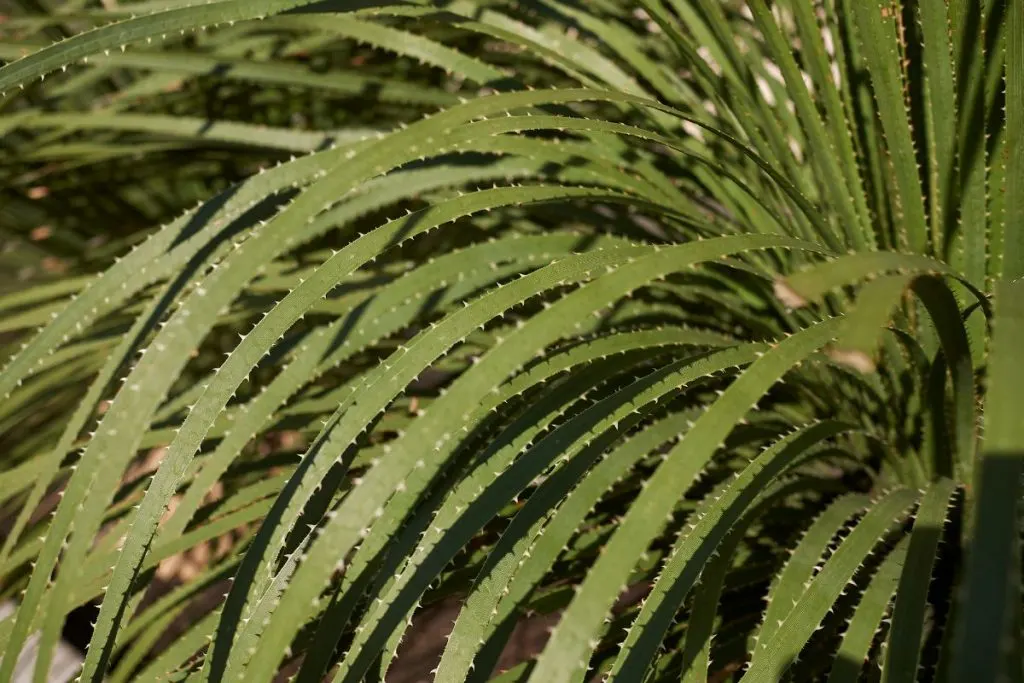
Dasylirions is a genus of flowering perennial shrubs native to the southern United States and Mexico. It is one of the drought tolerant plants. It’s in the “family ” of large succulents as well.
There are more than 15 individual other succulents, and with their long spiky foliage, they have an ornamental grass-like appearance.
Light Conditions
Dasylirion works best in full sun conditions. It can survive in partial light shade but will see more leaves as a result. This works for most succulents.
Soil Type
Texas potting soil can grow in moist soils and is not picky about pH levels. However, the area should be well drained and sandy soil preferred.
Watering Schedule
Texas sotol is known for its drought tolerance and tends to be self-sufficient with minimal irrigation. Despite its ability to cope with drought conditions, Dasylirion also tolerates fairly high humidity.
Temperature And Humidity
Although this plant is native to the hot, dry regions of the southern United States and Mexico, it is amazingly frosted tolerant and has even been known to be able to survive short periods of cold weather. Severe frosts down to 20F.
Fertilizer
Use liquid fertilizer on this lovely bright shade plant.
Ice Plant And Its Lovely Shapes
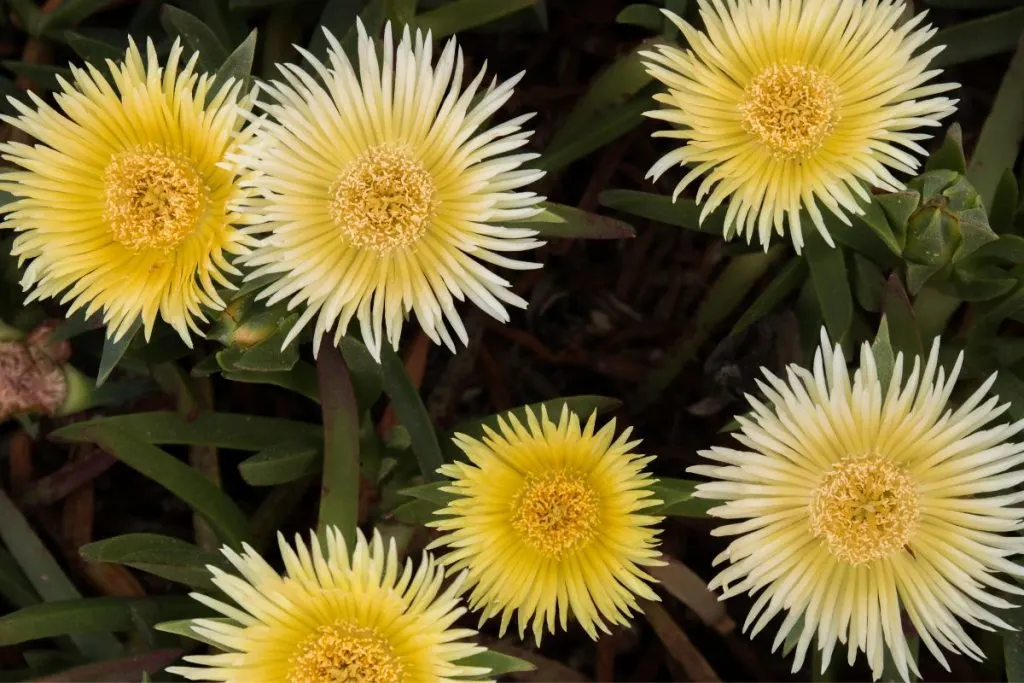
The name of the ice plant comes from the tiny hairs on the plant that reflect light in a way that looks like ice crystals. The foliage is fleshy and succulent, and it turns darker as fall temperatures drop. In warm regions, many types of ice plants are evergreen.
Light Conditions
Ice plants like full sun, which allows them to bloom profusely. Sun-loving plants often have long legs and weak growth. Make sure to give them at least six hours in direct sunlight.
Soil Type
Dry soil with good drainage is essential for an ice plant. The plant will tolerate constant wet conditions and will not thrive at all in dense clay soils. Sand and gravel soils are ideal for this plant.
Watering Schedule
Once established, water your ice plant sparingly throughout the growing season. Watering every two weeks should be sufficient during periods of no rain, although weekly watering may be necessary for hot weather.
Temperature And Humidity
All ice plants, including the hardy varieties, are sensitive to cold temperatures. Be sure to test the hardiness of any new ice plants you want to grow as a perennial. If you live in a snowy area, you may want to mulch in the winter. They grow best in arid climates.
Fertilizer
It may be helpful to add compost or a slow-release flower fertilizer, according to label instructions, when growing. Ice factories can work well without any power source.
Agave Arboreum Will Bloom Nicely – Large Succulent Plants
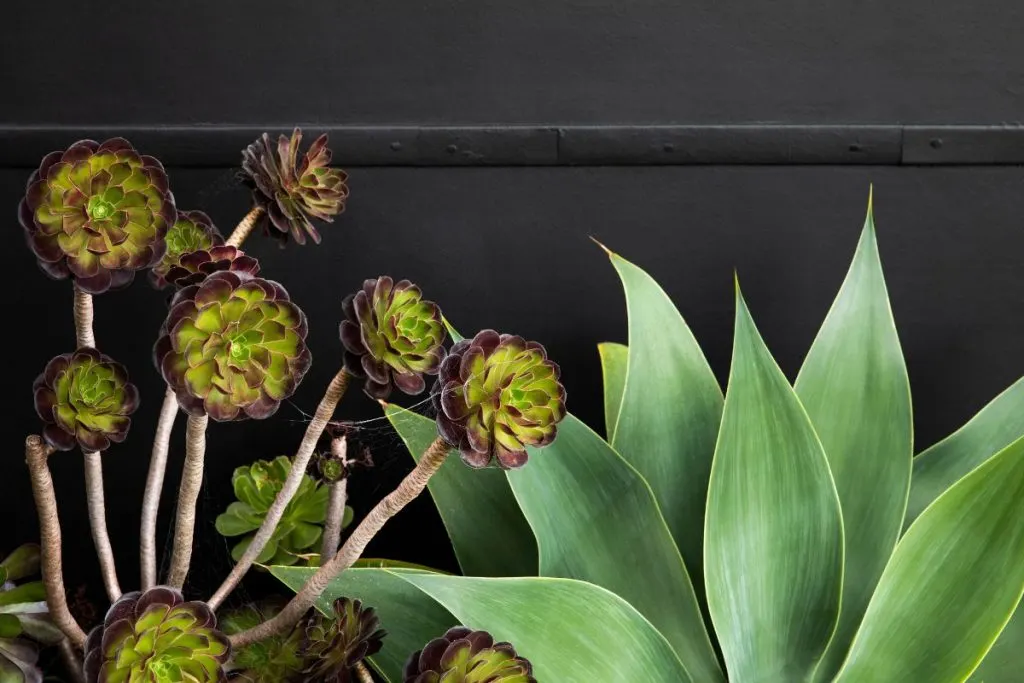
Agave is a large genus of plants native to the arid and semi-tropical regions of Central and South America. There is great diversity within the genus, with hundreds of named cultivars, most of which are in the shape of rosettes, with thick, pointed leaves with thorns at the ends.
Light Conditions
Agave plants prefer places with full sun. This means at least 6 hours of direct sunlight on most days. But they can withstand a little shade. The hotter the climate, the more shade they can withstand.
Soil Type
Agave plants tolerate well-drained soils but prefer rocky and sandy soils. Inadequate soil drainage can lead to root rot, which can kill plants. They also like slightly acidic to neutral soil pH.
Watering Schedule
Mature agave plants are very drought tolerant. As a rule, you only need to water them if there has been no rainfall for a long time and the soil is completely dry. Then, depending on the amount of rainfall, water once a week and gradually every two weeks.
Temperature And Humidity
Most agave plants cannot tolerate frost and can only grow north to USDA growth zone 8. High humidity can cause the canopy of a plant to rot.
Fertilizer
Agave usually does not require fertilization.
Aloe Lovely Small Succulents Or Large Succulent Plants
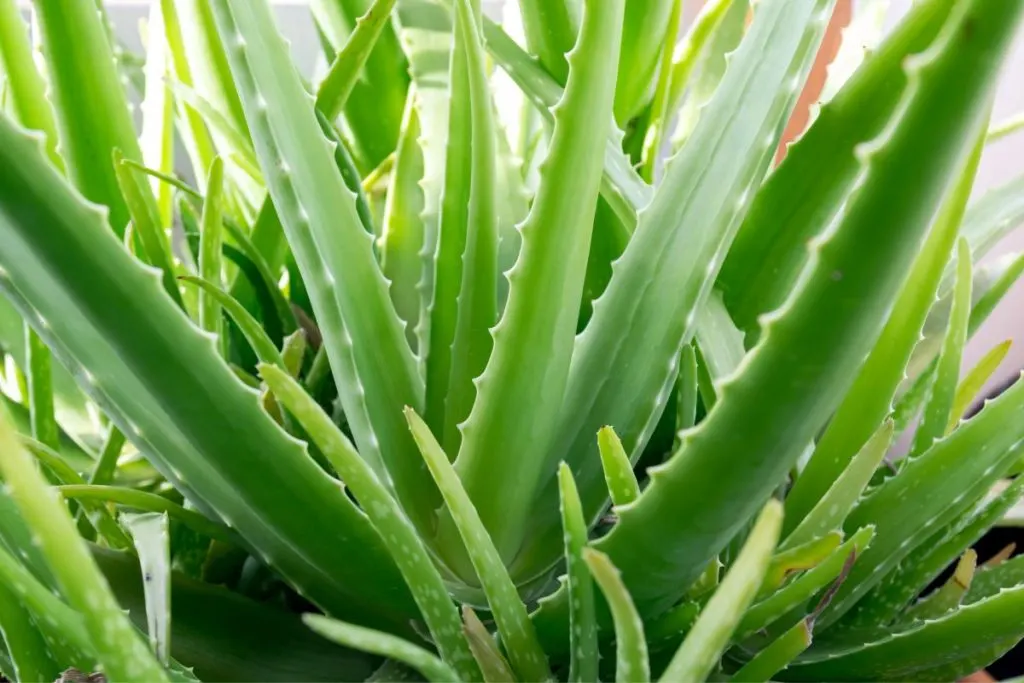
Aloe vera, commonly cultivated as a houseplant, is known for its leaves containing soothing gels used for sunburn and other skin irritation. Over 300 species of this tropical succulent plant feature fleshy spear-shaped leaves with serrated edges that grow from basic rosettes.
Light conditions
For aloe vera to thrive, it needs bright, natural light. Outdoors, aim for a full sun of up to 6 hours, with a little shade in the afternoon. When growing aloe indoors, it should be placed in a window exposed to bright, indirect sunlight. Direct sunlight can burn his delicate skin.
Soil Type
In its natural habitat, aloe vera often grows on nutrient-poor soil conditions on sandy slopes with guaranteed drainage. Use cactus compost or traditional compost mixed with pearlite and coarse sand to drain the pot well.
Watering Schedule
Aloe prefers regular watering as long as the soil is completely dry between watering. If the soil is dry for a long time, the leaves will wrinkle and curl slightly. Plants recover when watered, but long-term stress. Do not water outdoor plants during the rainy season.
Temperature And Humidity
Aloe grows naturally in dry, tropical, and semi-tropical environments, so mimicking these conditions will make aloe prosper. Do not leave the container plant outdoors if you are aiming for a temperature of 70 F and the night is expected to be below 40 F.
Fertilizer
Aloe vera grows best in poor soil conditions and does not require fertilization. However, fertilizing potted aloe once a year in the spring helps maintain vigorous growth.
Flapjack Plant And All About It
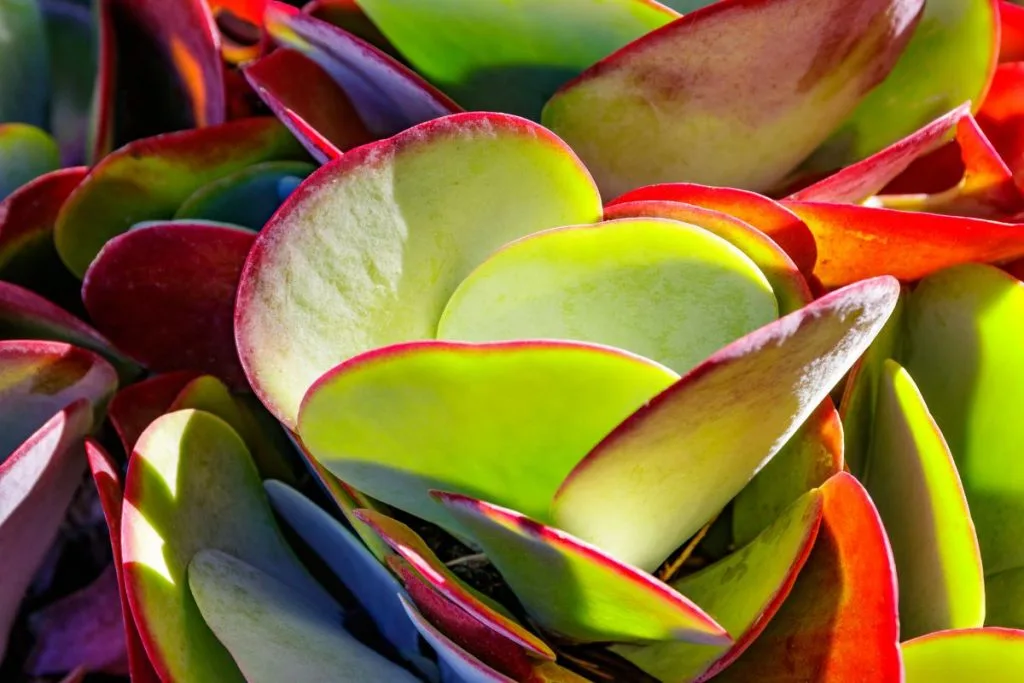
Flapjack succulents (Kalanchoe luciae) are also known as paddle plants because of their leaf paddle or asari-like shape formed by rosette clusters.
Light Conditions
Flapjack likes a lot of the sun, as you would expect from succulents that grow naturally in and around South Africa. It also works well in partially shaded areas. When the plant is bright enough during the cool winter months, its green leaves are more likely to develop.
Soil Type
Flapjack succulents prefer well-drained soil. Sandy or loamy varieties that do not retain much water help them thrive. If the plant is grown indoors, make sure the pots you use are well drained.
Watering Schedule
As expected of succulents, a flapjack is drought resistant and great care must be taken not to over-water it. Be sure to dry the soil completely before watering it completely again in the hot season. In winter, watering is little or no need.
Temperature And Humidity
Like most succulents, paddle plants thrive in dry, hot areas. They are not tough, so they are most commonly kept as foliage plants. If the winter temperature is below 20 F, it is recommended to store it as a houseplant or bring it indoors during the winter.
Fertilizer
Your flapjack succulents appreciate being given a balanced and diluted fertilizer during the spring and summer growing seasons. It should be more than enough once every few months.
Crassula And How To Take Care Of It
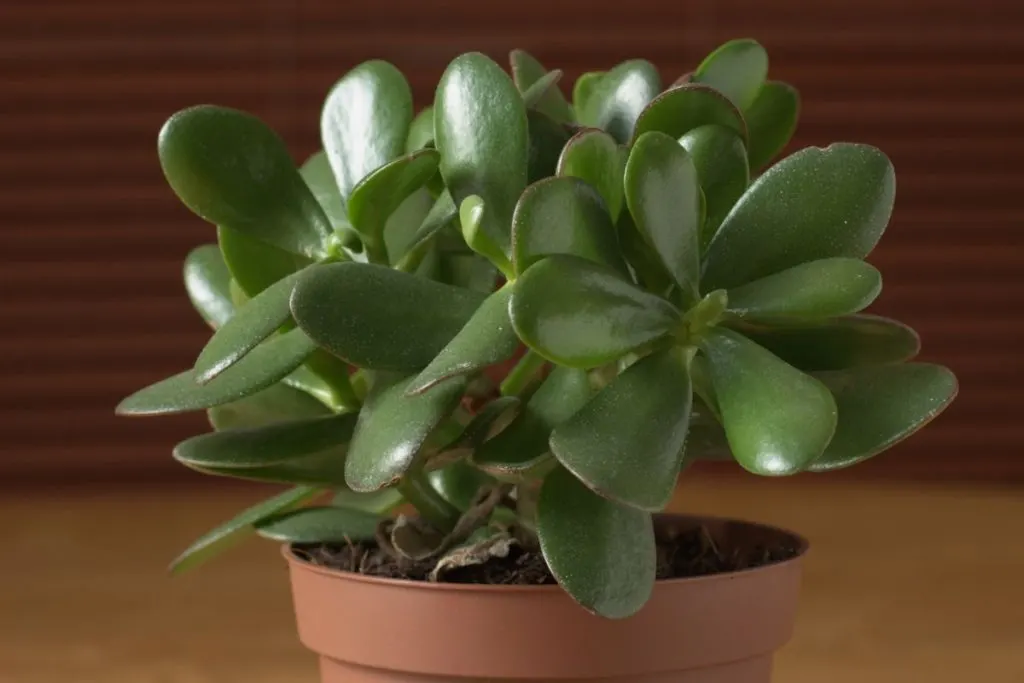
The genus Crassula is a diverse and widespread genus of succulents, totaling about 350 species, but perhaps the best known in this group is the emerald jade plant (Crassula ovata).
Light Conditions
Most Crassula plants require some shade during the hottest months of summer, but bright light is needed to achieve the brightest colors. When cultivated outdoors, shaded areas in the morning sun and afternoon are best (full sunlight can burn the leaves all day long).
Soil Type
Crassula plants are well-drained and require optimal soils for sandy rocky mixtures specially formulated for succulents. They prefer neutral soils to slightly acidic soils, but they rarely kill plants even at extreme pH levels.
Watering Schedule
As a rule of thumb, succulents prefer sparse watering. To avoid watering, water the plants, drain them completely, wait for the soil to dry, and then water them again. In the cooler months, cold and moist soil can cause root rot, which can reduce watering.
Temperature And Humidity
Pigmyweed plants can be grown outdoors as perennials in Zones 9-12, but elsewhere they should be brought in winter or grown as houseplants. Some species can withstand light freezing, but temperatures below 30 F may be sufficient to kill them.
Fertilizer
Feed crassula plants sparingly. You can give a small amount of organic fertilizer, which is labeled as suitable for succulents. Fertilize when it begins to grow vigorously in mid-spring, but no further feeding is required.
Do Succulents Grow Well In Shade Or Sun?
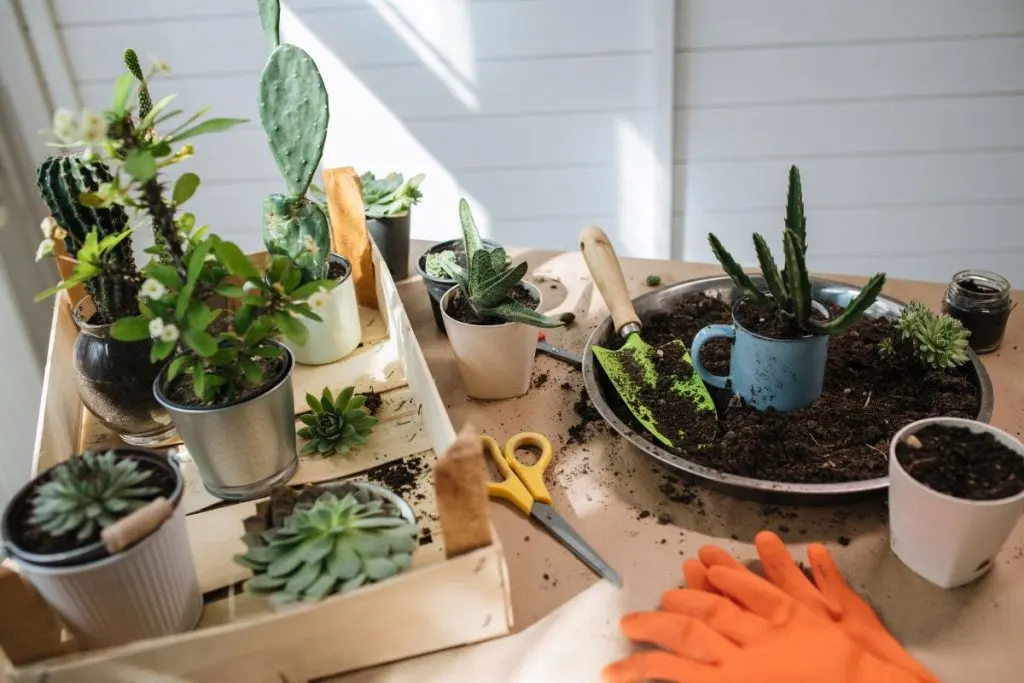
Most right succulents require some shade during the hottest months of summer, but bright light is needed to achieve the brightest colors. Excess water during this period can damage your plants badly.
Plants such as spider aloe, African baobab, agave attenuata, agave blue flame, aeonium arboreum, Euphorbia tirucalli, and queen victoria agave and these above grow best in partial shade.
Large Succulent Plants – Wrapping It Up
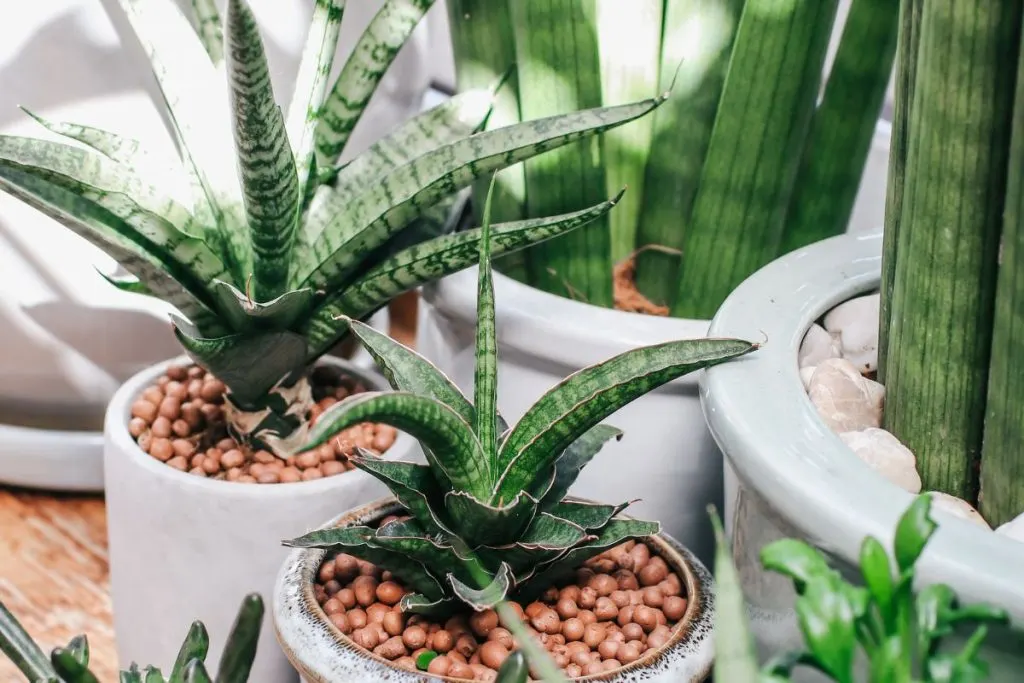
And voila! We’ve come to an end to another useful article about plants. I hope you learned all you wanted to learn about these great plants.
Between these 9 best large succulent plants I’m sure you can find at least two or three for yourself. Am I right?
I think it’s the right time for you to go to the nearest store now and buy some lovely succulents.
Until next time my dear ladies, see you soon!

